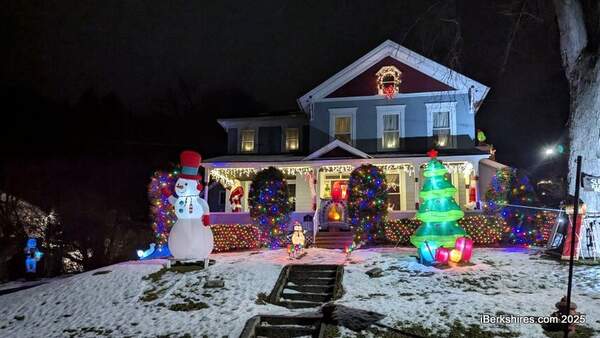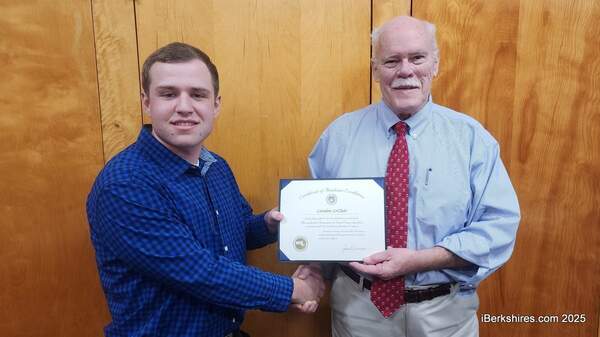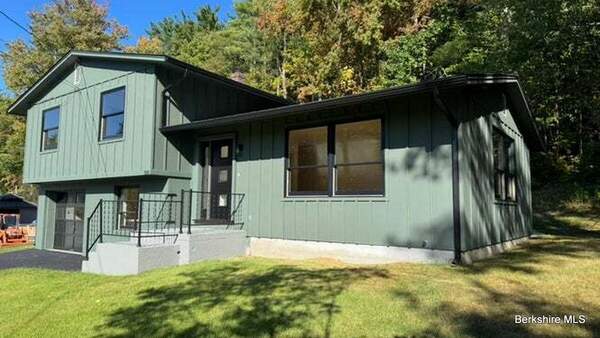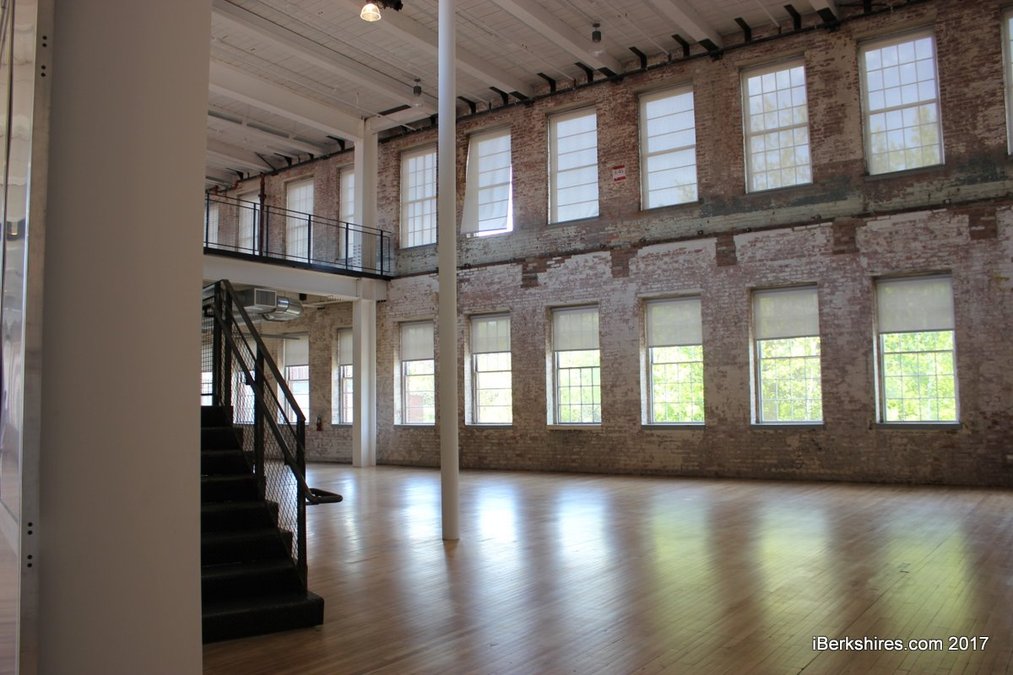
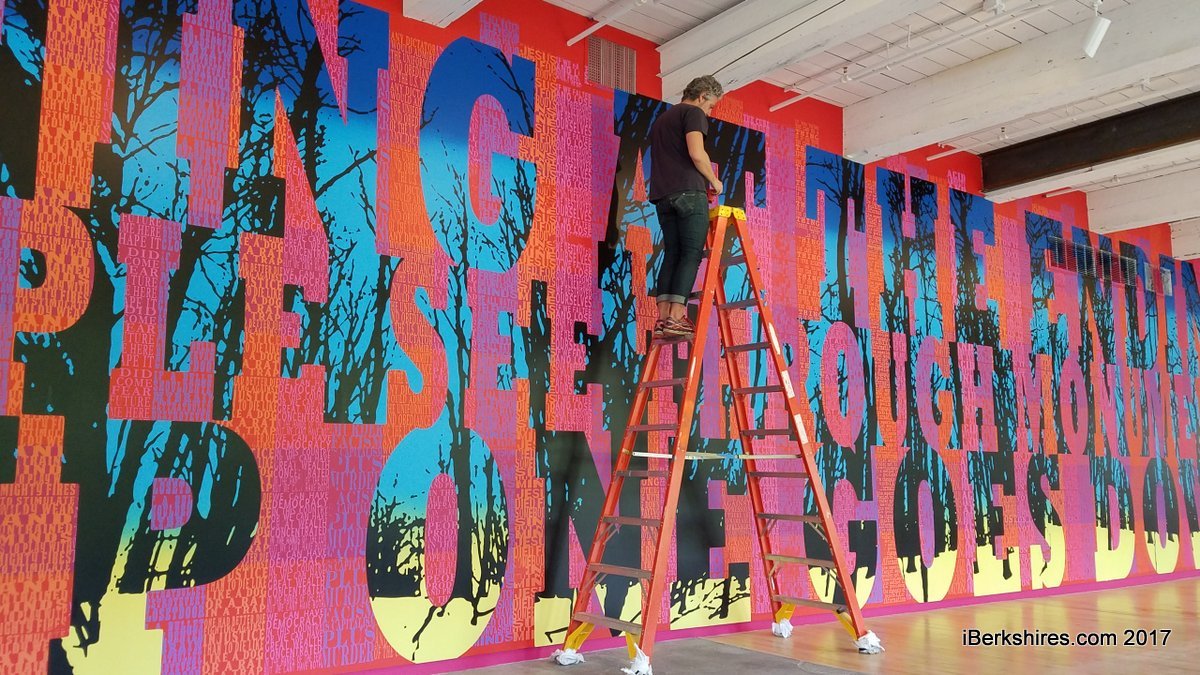
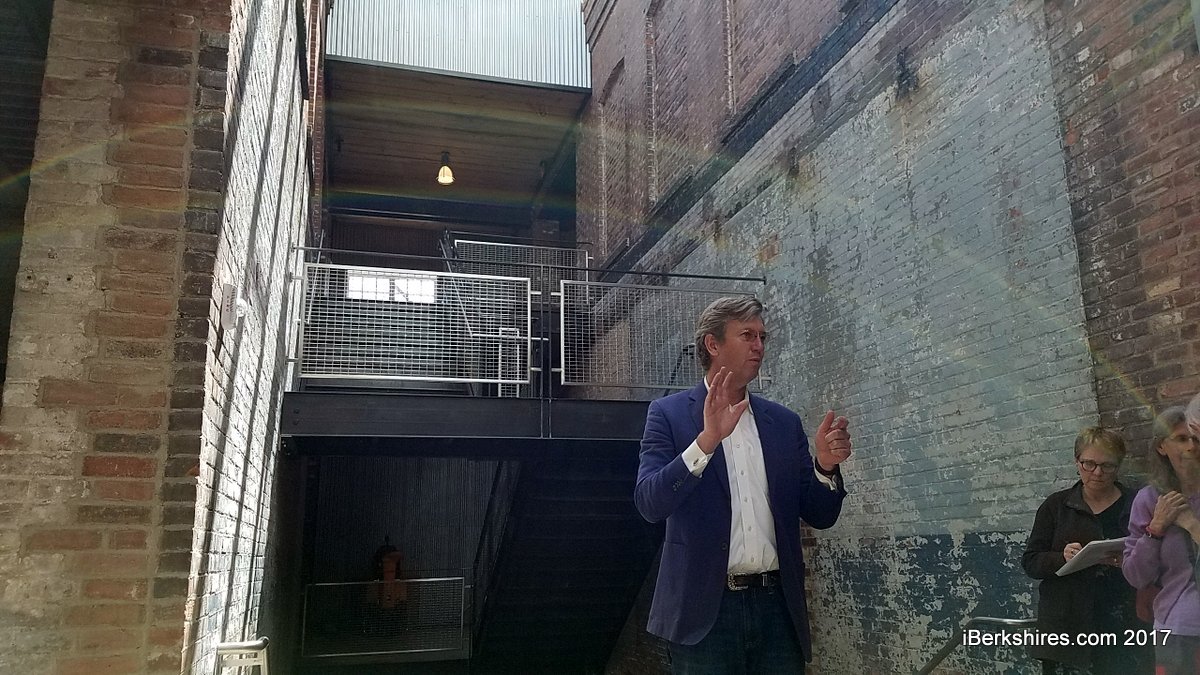
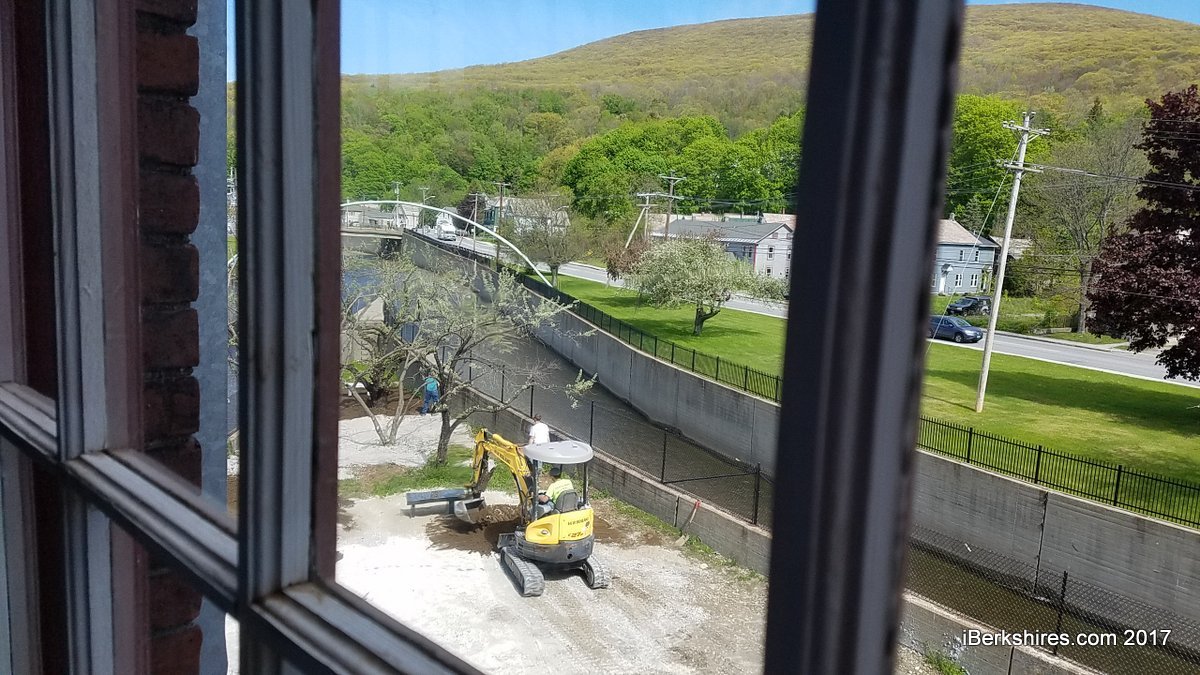
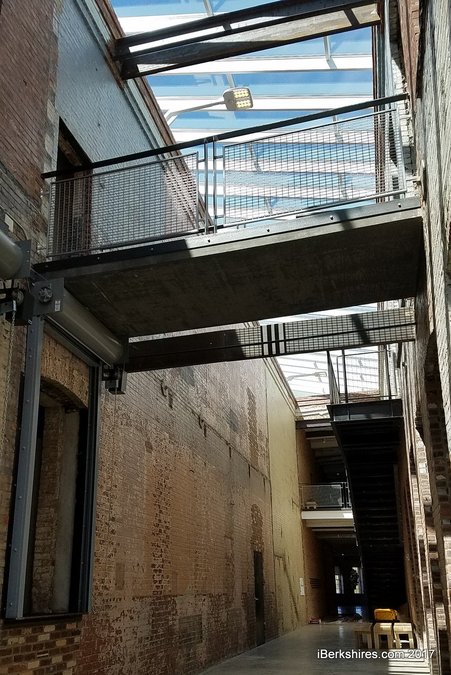
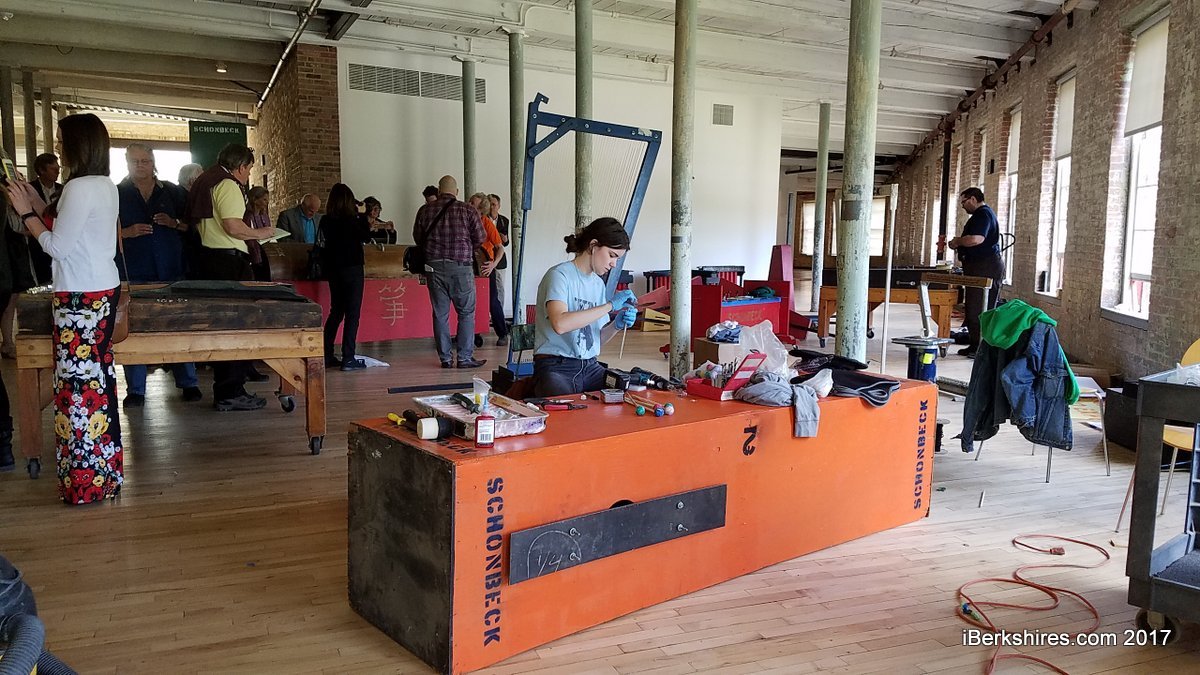
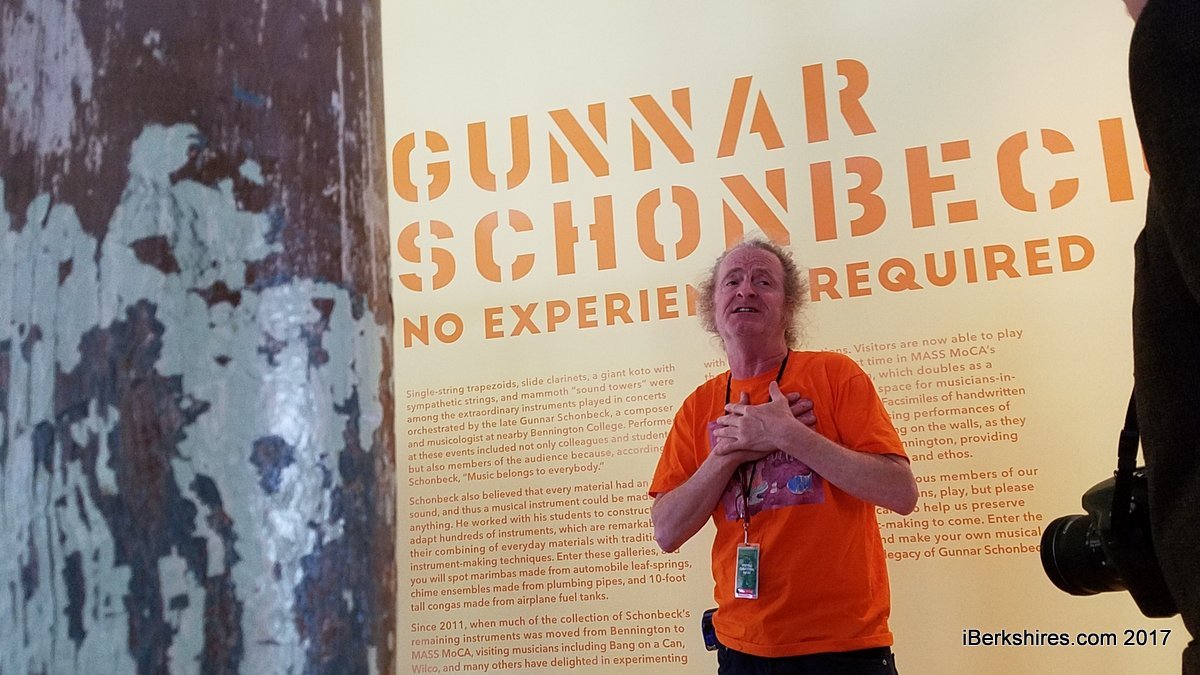
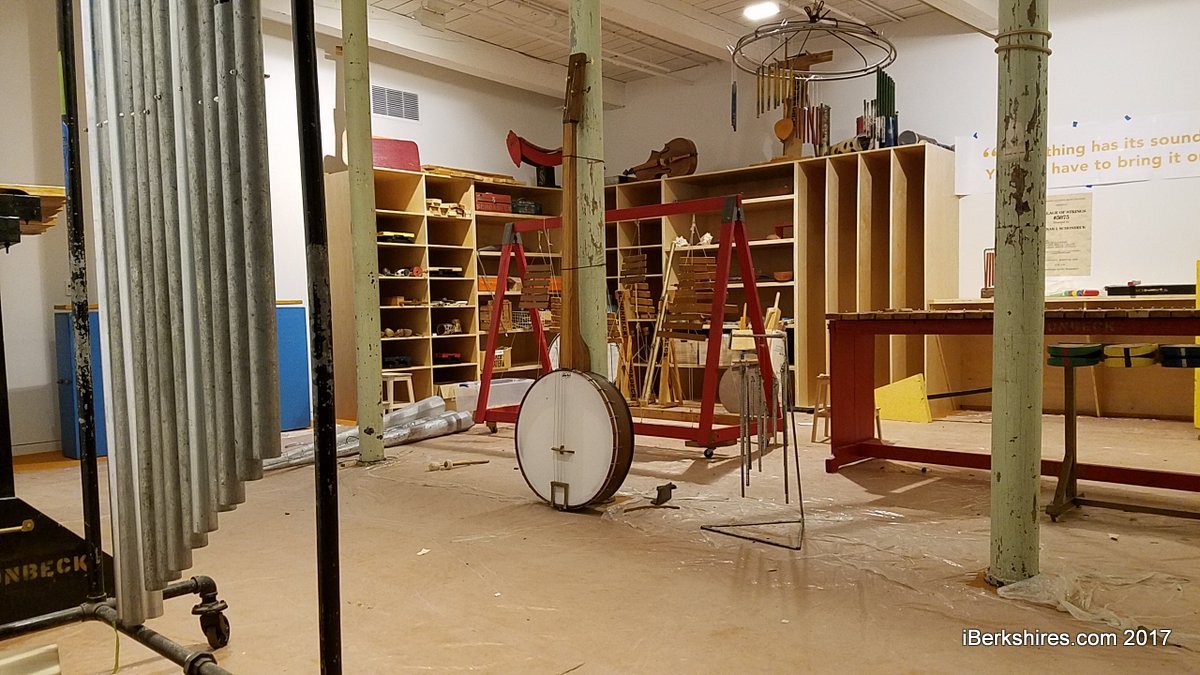
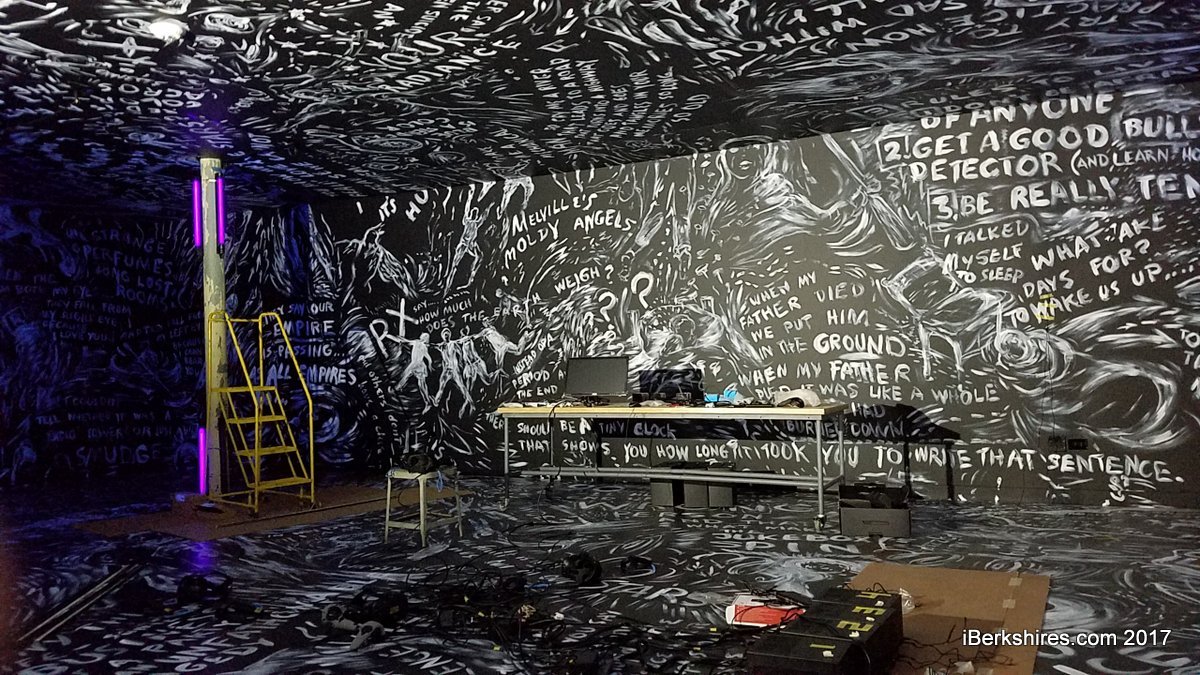
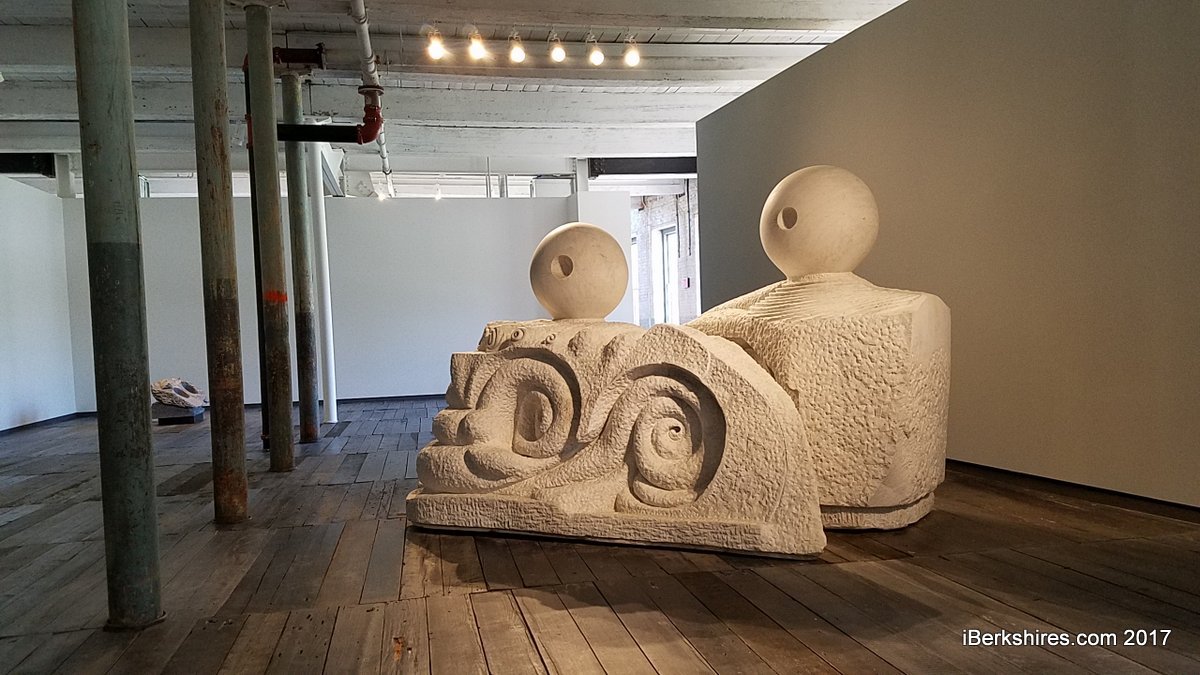
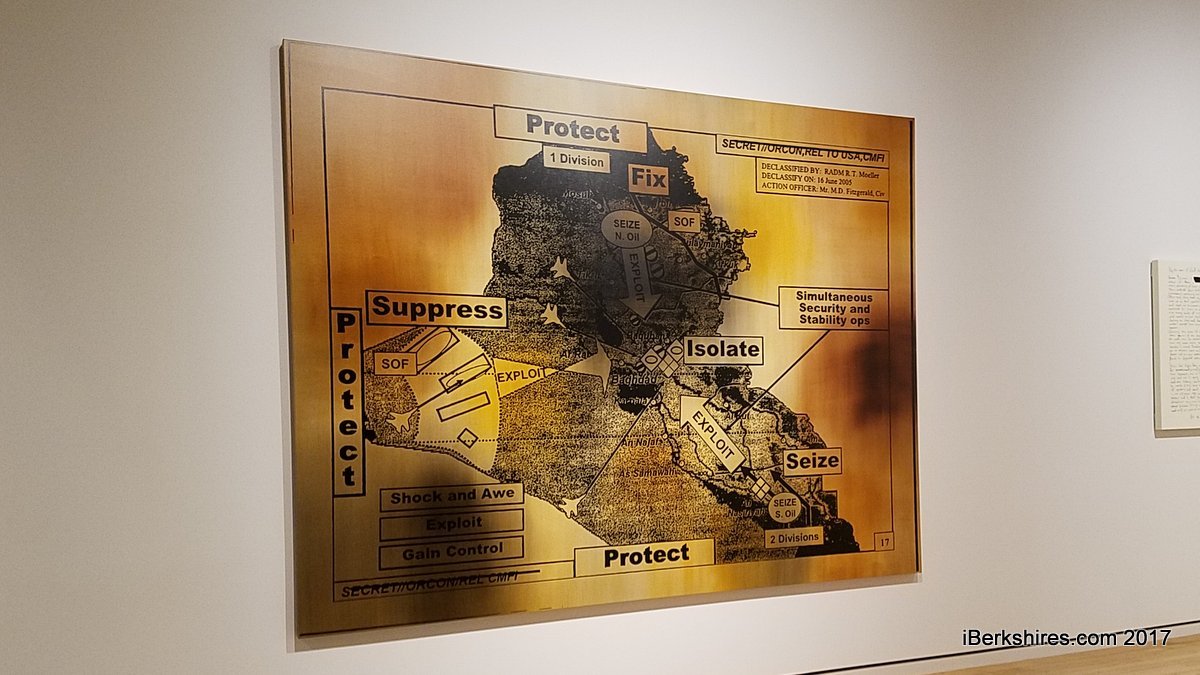
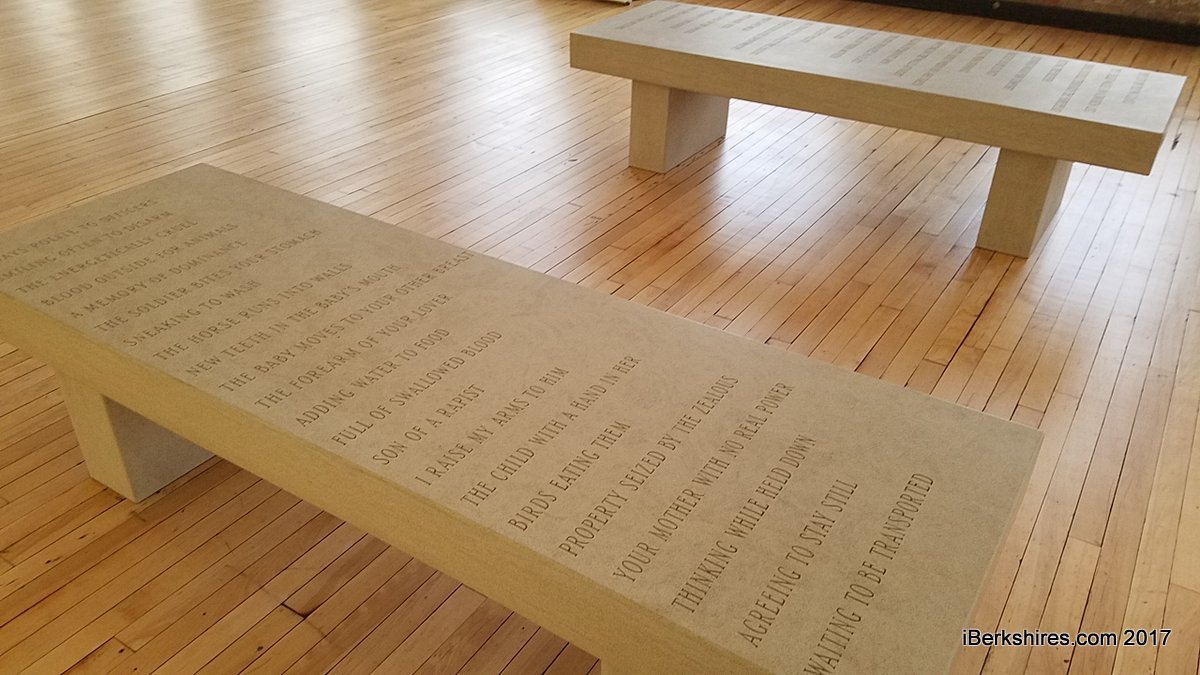
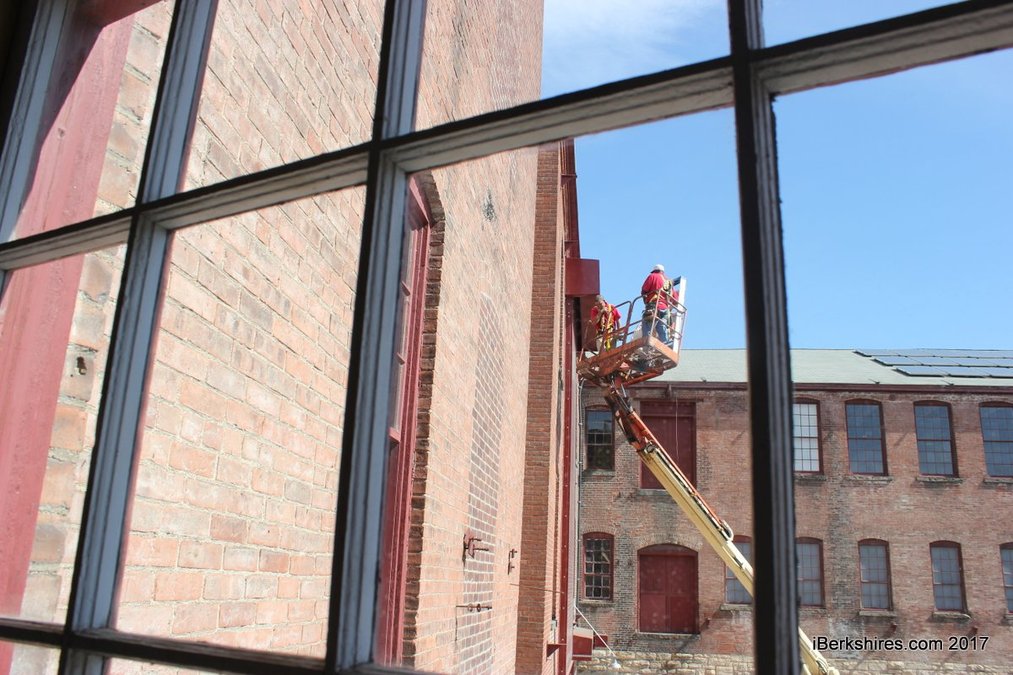
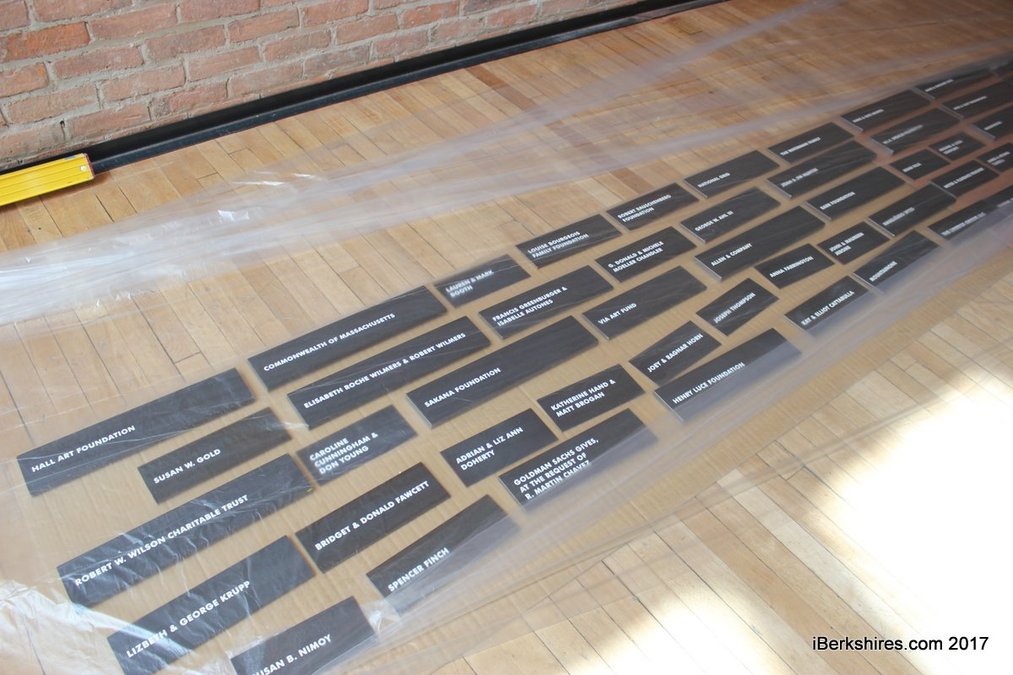
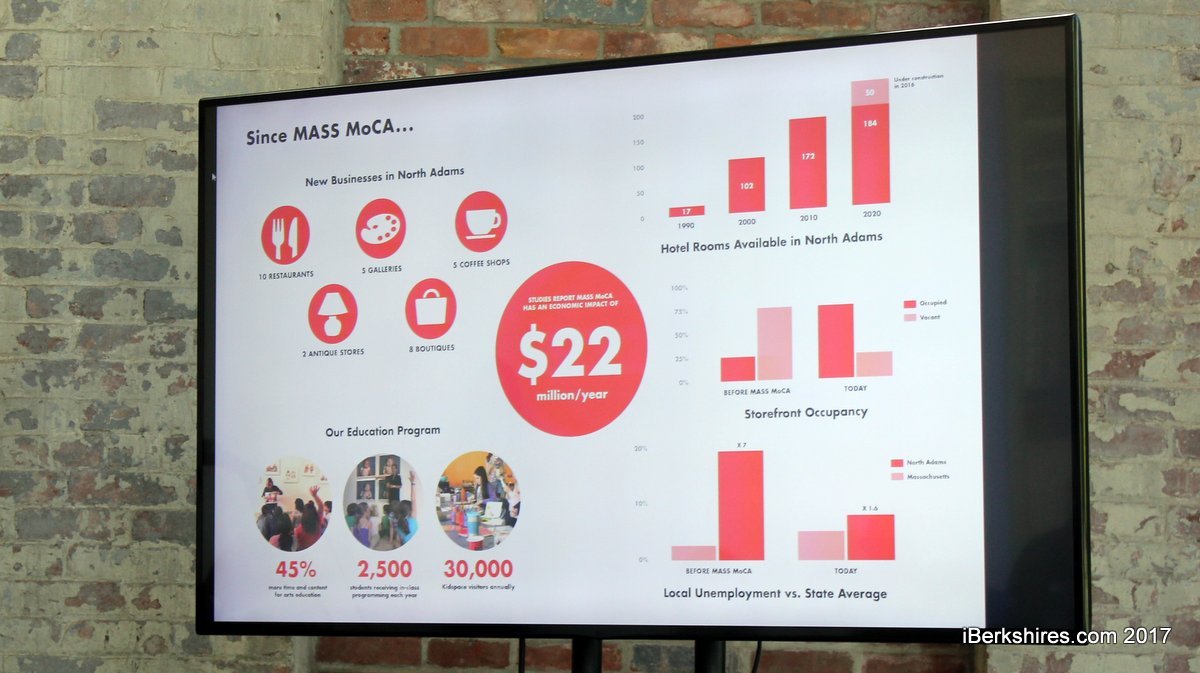
Mass MoCA's Building 6 Opens May 28

NORTH ADAMS, Mass. — A visitor to Massachusetts Museum of Contemporary Art this summer could potentially wander more than four miles if he or she circumnavigated every gallery.
So, should the museum's $65 million expansion and renovation not work out, joked Executive Director Joseph Thompson, it could always open as a health club.
In just 12 days, Mass MoCA is set to double its gallery space with the opening of the three-story Building 6. The banging of hammers accompanied Thompson's talk and tour of the museum space during a press preview on Tuesday morning as last-minute work continues in preparing the 130,000 square-foot space.
"We have more room to show more art for longer," he said. "This phase really does wonders, it opens up this big generous loop up and down, horizontally."
The new galleries will allow visitors to make walking loops or figure eights inside and outside the massive complex; when it opened in 1999, patrons had to turn around and come back at reaching the end of the main gallery. Since then, the Sol LeWitt and Anselm Kiefer exhibits, among others, have beckoned visitors to linger without backtracking.
The hope is that slowing down (one exhibit requires you to wait 15 minutes) and expanding programming will encourage "day-trippers" to spend the night in the area, thereby increasing their spending by a factor of between 4 and 7. It's a goal Thompson's been talking about for years and the foundation of a recent initiative to label the region "ArtCountry" in collaboration with the Clark Art Institute, Williams College Museum of Art, Williamstown Theatre Festival and the Bennington (Vt.) Museum.
"We think this project will help with a lot of other things that are going on in the area," he said, describing the components as twofold: sacred — in art bringing meaning and quality of life to encourage people to live here — and profane, a more direct taking in of money that visitors spend.
Right now, the museum pumps about $22 million annually into the economy according to surveys done by the Ford Foundation and Williams College.
"It's about the same number we projected but it came from a completely different formula," Thompson said. What the museum discovered, however, was that its expected 10 percent attendance by area residents was closer to 30 percent, which can't count as economic impact because it's not "new dollars" coming into the system. Rather, the economic impact is supported by the amount of leased space on the campus.
"It's about making it bigger and better to keep people here," he said. "It's a simple idea but it's important."
Mass MoCA has a budget of about $10.5 million and draws some 165,000 visitors a year, with the expectation of adding another 35,000 to 65,000 with the opening of the new building. According to the 2006 Center for Creative Community Development (C3D) study, every new 10,000 patrons to Mass MoCA translates to new regionwide economic activity of approximately $1.8 million, generating $160,000 in additional local and state tax revenues. The total impact of Phase III development could reach more than $11 million per year.
What visitors will find is bright and spacious floors filled various art media. Unlike other museums, Thompson noted that Mass MoCA liked windows and believed views would make the space seem even more expansive. The structure retains its industrial heritage with exposed brick and piping and original floors. An area that used to let light into the interior during the Adams Print Works years and covered over by Sprague Electric has been reimagined with modern skylights. The industrial blue and pink paint on the walls mark where bathrooms had once been.
"Obviously, the buildings are raw, rough, really, really beautiful buildings," Thompson said. "We don't gild the lily here ... we have exposed all the systems. This floor was here so we just left it, that floor around the corner is different but we left it. ...
"I think our architect, Bruner Cott & Associates, have done an absolutely brilliant job exposing the buildings and letting them be used. We like sidelights ... we like being able to look out ... one of the great things about this new circulation pattern is it exposes views to the inside courtyards as you walk and to the neighborhoods and the hills."
Thompson estimates the renovation's cost per square foot at about $380 — including the endowment. "The going rate for museums right now is about 10 times that amount," he said.
Four long-term installations and changing exhibits by artists Laurie Anderson, Louise Bourgeois, Jenny Holzer, Robert Rauschenberg, Gunnar Schonbeck and James Turrell will be featured across the three levels. The media they work in ranges from pure color to large-scale instruments to Bourgeois' 32,000-pound marble "Untitled," for which a section of wall had to be removed to crane it into the gallery.
Mass MoCA's found a niche in providing long-term exhibit space for large and complex pieces — the 105 drawings in the Sol Lewitt retrospective in the 27,000-square-foot Building 7 being perhaps the most notable. But Thompson said the museum is still dedicated to showing new and emerging artists with some 30,000 square feet carved out in Building 6 for that purpose.
It also retains its commitment to the performing arts and the renovations included updating the behind-the-scenes spaces like green rooms, catering facilities, and bathrooms.
"At least 50 percent of our human resources, money, marketing efforts, emotional bandwidth goes into the performing arts," Thompson said. "If you look at our budget, where people work, we are just as devoted to the performing arts as we are to the visual arts."
He estimated that about 500 to 600 support people and family members come along with the larger performances.
"It's been a little rough at the edges ... we can now host performers in a way that's much more graceful and welcoming and accommodating," he said.
The project also included workshops to enhance the museum's capacity to make and fabricate what it needs, as well as systems, artworks, outfitting gallery spaces, event space, and money set aside in a building reserve endowment.
This Phase 3 project was seeded with $25.4 million from a state capital bond bill in 2014; the balance has been filled out by fundraising.
Thompson said fundraising has gone well with about $7.4 million left to raise. That may be upped to closer to $10 million with Rauschenberg's idea to put an oculus in the large tank at Joe's Field. He estimated that at about $2 million.
He said the museum itself was a good example of how public and private collaboration can make something happen. Mass MoCA was just the germ of an idea back in the 1980s when Sprague Electric closed. It would take a decade to get funding in place — with a $35 million shot from the state — and get it open in 1999.
"The commonwealth of Massachusetts made a heroic investment in this $25 million," Thompson said of the newest grant. "I would like to point out in this time it seems very difficult to get any kind of collaborative agreement about anything in the political sphere, Mass MoCA has enjoyed the uninterrupted and enthusiastic support of seven governors of both parties without hesitation. ...
"While it's true the funding legislation was written in two Democratic administrations (Dukakis and Patrick), the monies were delivered during Republican ones (Weld and Baker)."
Building 6 opens to the public on Sunday, May 28, at noon. The main galleries will open at 11 a.m.; Nick Cave's "Soundsuit" parade is at 3 and the Brooklyn Marching Band at 6. The band Cake is in concert on Joe's Field at 8 p.m.
North Adams residents will be admitted free on opening day; Cake, however, is a separately ticketed event.
Tags: mass moca,


